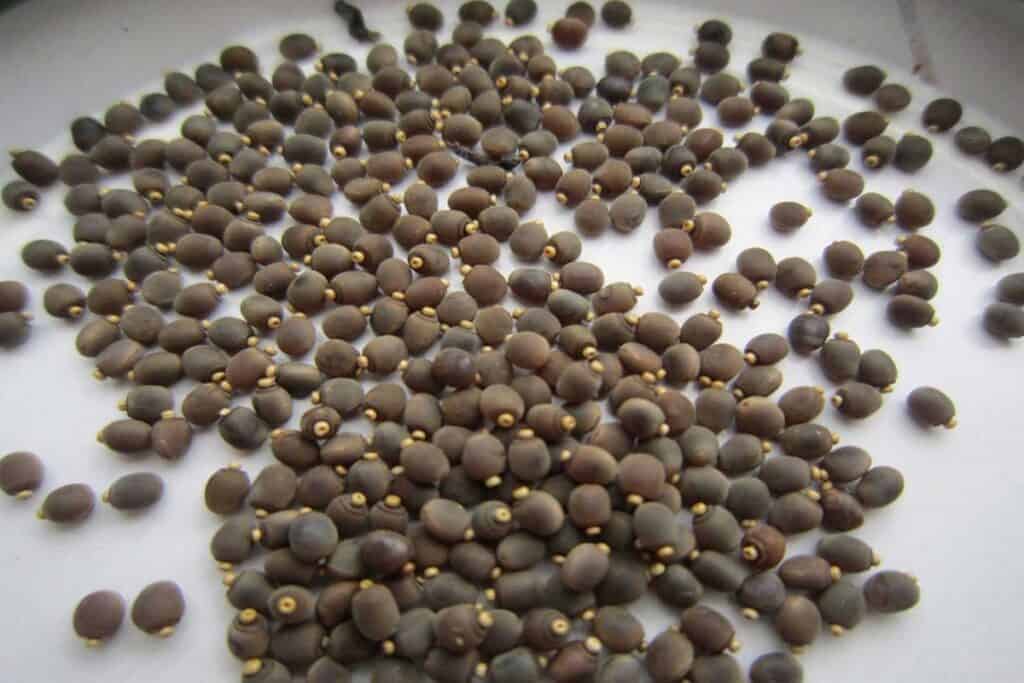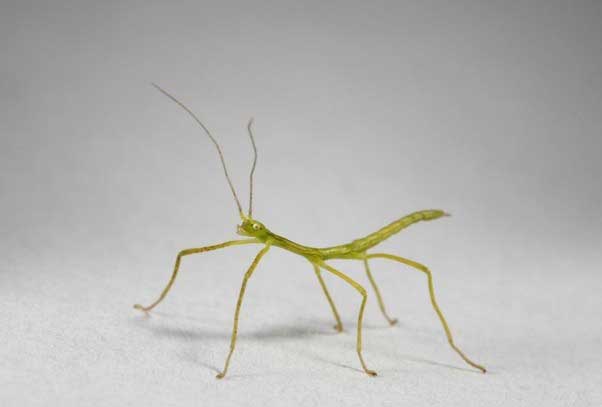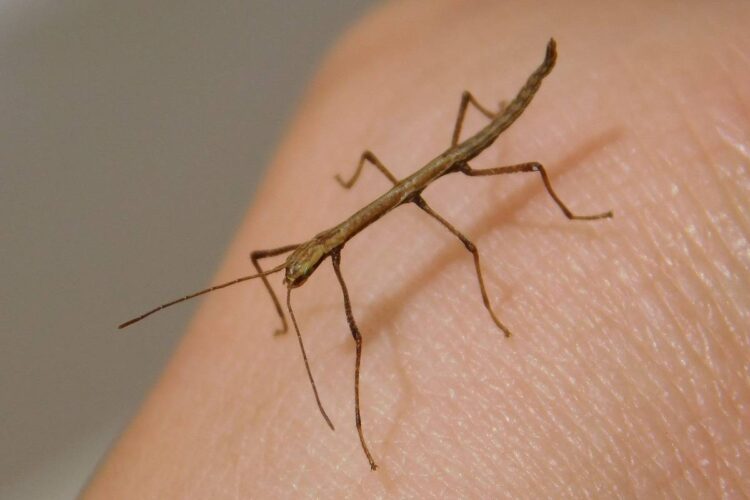Table of Contents
If you are an inexperienced Indian stick insect owner, you may be always be on the lookout for more information to help you with your insect-keeping endeavours. And among the many things people are interested in is learning more about how to look after Indian stick insect eggs, particularly if they have come across these tiny seed-like objects in the bottom of their insects’ enclosure.
Place the eggs in a ventilated container on kitchen paper. Keep this paper moist but not saturated. Allow it to dry before re-spraying. Know that extreme temperatures (20-25C is ideal), excessive moisture (can cause mold), or a container that is too dry can cause the eggs to deteriorate, decreasing the chances of nymphs hatching.
What you should know about Indian stick insects is that they are parthenogenic . This means that they are capable of laying ready-fertilised eggs without the need of a male of the species. And most of these eggs will hatch into nymphs
. This means that they are capable of laying ready-fertilised eggs without the need of a male of the species. And most of these eggs will hatch into nymphs (provided the eggs have been taken care of properly).
(provided the eggs have been taken care of properly).
For a wealth of advice and information on all things stick insects, check out my ebook by clicking here or on either of the images (all open in a new tab). All your stick insect questions covered for just $2.99 (or the equivalent in your currency)!
or on either of the images (all open in a new tab). All your stick insect questions covered for just $2.99 (or the equivalent in your currency)!
Looking After Indian Stick Insect Eggs
If you want to learn more about looking after Indian stick insect eggs, this article will provide you with all the relevant information required to ensure the nymphs hatch. Whether you had planned to breed your stick insects or not, you may now be in a position where you have eggs and you just don’t know what to do with them.
There are some things you need to know about creating the right environment for ‘breeding’ your stick insects. For starters, you can keep the eggs in the same tank as the adult sticks, but it may be easier to move them to another safe place until they have hatched. This way, you can ensure the eggs are kept safe and secure until the nymphs finally appear.
You do not need to buy another tank for the eggs; a small plastic, sealed container will work just fine. However, you do need to make sure that wherever you place the eggs is well ventilated. Although taking care of Indian stick insect eggs is relatively straightforward, you should know that these eggs are vulnerable and there are certain conditions that can put them in danger.
eggs is relatively straightforward, you should know that these eggs are vulnerable and there are certain conditions that can put them in danger.

Important: Extreme temperatures, excessive moisture, or a tank that is too dry can cause the eggs to deteriorate, decreasing the chances of live nymphs hatching.
It is important that the temperature be kept between 20C and 30C. Definitely make sure it doesn’t get any higher than 30C.
Eggs do require moisture, but it is important to ensure that the container does not get too wet as this can result in mold and fungi growth, which can both be detrimental to the eggs. It is your responsibility to mist the eggs regularly. Nevertheless, to prevent potential mold build-up, allow the container and any substrate within to dry for at least a day before spraying again.
How Long Before Indian Stick Insect Eggs Hatch?
Once you have found stick insect eggs in your tank and have moved them to another container, you will probably have to wait anywhere between two and nine months before you see tiny nymphs appear. While waiting, be vigilant that the conditions are right. If you can do this, you will eventually see tiny nymphs walking around the container; at this point, they can be moved back to the enclosure with the adults.
You will need to make sure that you have a fresh source of food in the container at all times. Indian stick insects like to eat a variety of leaves, with particular favourites being bramble, privet, hawthorn, rose, and oak leaves. When it comes to nymphs though, it is important to ensure that the leaves have been torn a little as they are unable to eat undamaged leaves.
Tip: To make it easier for the nymphs to feed, it is probably best to use a scissors to cut the edges of the leaves.
Ensuring the Nymphs Thrive
Indian stick insects are extremely easy to take care of, which is why they make such great pets for children. Provided they are kept in a clean, warm, humid tank with plenty of fresh leaves, they will thrive.
It is possible to buy special tanks for stick insects that come with a mesh top. The mesh screen at the top of the tank provides a place for your sticks to hang when shedding their skin while at the same time offering the ventilation required. Amazon has a great selection of stick insect enclosures – see some by clicking here
when shedding their skin while at the same time offering the ventilation required. Amazon has a great selection of stick insect enclosures – see some by clicking here (opens in a new tab).
(opens in a new tab).
For easy cleaning of the tank, place tissue paper or newspaper on the bottom. This is probably the cheapest method as well. The paper can be easily removed and replaced when the tank needs cleaning.
Know though that stick insects only eat fresh, green leaves. If the leaves start to dry out, the sticks will not touch them, and even if they are hungry, they will avoid the leaves. This is why it is so important to always have fresh leaves in the tank. Nonetheless, to avoid having to replace the leaves every day, have a water source in the tank and place the leaves (still attached to a stem) into the water, which helps to keep them fresh for a few days.
It is important to cover this water source though because although adult sticks will not usually have a problem, nymphs can sometimes fall in. If this happens, in all likelihood the nymphs will drown, usually in mere seconds. Nymphs rarely climb out of the water if they fall in.
To keep the water covered, roll up pieces of paper and place them on the top of the water or you can cover the container with mesh or net and place an elastic band around it. This will allow you to place the stem of the leaves through the mesh without worrying about your nymphs falling in.
Stick insects love to climb, so place climbing and resting places in your tank for their pleasure. Things such as branches, twigs, and sticks are great – your stick insects will love these as it helps them blend in with their surroundings. You can also buy special decorations for the tank from a local pet store or online. However, any plastic items placed in the tank should be washed thoroughly to get rid of any chemicals that could potentially harm your sticks.

How to Source Food for Your Stick Insect
As previously mentioned, Indian stick insects love to eat the leaves of a variety of plants; fortunately, many of these plants grow abundantly in the wild. In terms of leaves from the oak and hawthorn trees, these make fantastic food sources for stick insects during the spring and summer months. They tend to be easily sourced too as they grow in woodlands and parks in most places.
Nevertheless, these trees lose their leaves during the autumn, which means an alternative food source will be required for the winter. Plants such as bramble grow throughout the year and are ideal for feeding your sticks.
What you do need to be careful of though is where you source the leaves from. If you have seen bramble bushes or wild roses growing nearby, you may assume that these leaves will be ideal for your stick insects . Nonetheless, it is crucial to take care when cutting leaves from plants that are close to busy roads. The fumes from cars and other vehicles tend to linger on nearby plants, and these fumes can harm your stick insects.
. Nonetheless, it is crucial to take care when cutting leaves from plants that are close to busy roads. The fumes from cars and other vehicles tend to linger on nearby plants, and these fumes can harm your stick insects.
You should also take care when buying plants for your garden. If you buy plants from a garden centre, the likelihood of these plants having been sprayed with insecticides will be extremely high. These chemicals could cause your stick insects to become ill or even die so any leaves that you are giving should be thoroughly washed beforehand.
Are You Ready to Breed Your Indian Stick Insects?
Breeding stick insects can be a great way to earn some extra cash, but are you ready to do this? You should know that although stick insects are relatively easy to take care of and maintain, you will need to ensure that the eggs are kept in the right conditions, as discussed in the above paragraphs.
Knowing how to look after Indian stick insect eggs is important before you get started. Each stick insect female adult can lay around two to three eggs every day, which over the course of a lifespan can equate to hundreds of eggs, hence hundreds of nymphs. This is something you need to be prepared for.
Managing stick insect eggs is important, particularly if you are not interested in breeding at all. Maybe you purchased a stick insect as a pet and had no idea of its ability to lay eggs that would hatch without being fertilized by a male? If so, the idea of your stick insect laying hundreds of eggs might be filling you with dread.
If you are keen to avoid lots of nymphs, or if you want to keep them to a minimum, it is important to know how to humanely dispose of the stick insect eggs . To do this, place the eggs you do not want in a receptacle in the freezer. The cold effectively puts the growing nymph within the egg to sleep (which is the humane way of killing it) and you can then get rid of the eggs.
. To do this, place the eggs you do not want in a receptacle in the freezer. The cold effectively puts the growing nymph within the egg to sleep (which is the humane way of killing it) and you can then get rid of the eggs.



